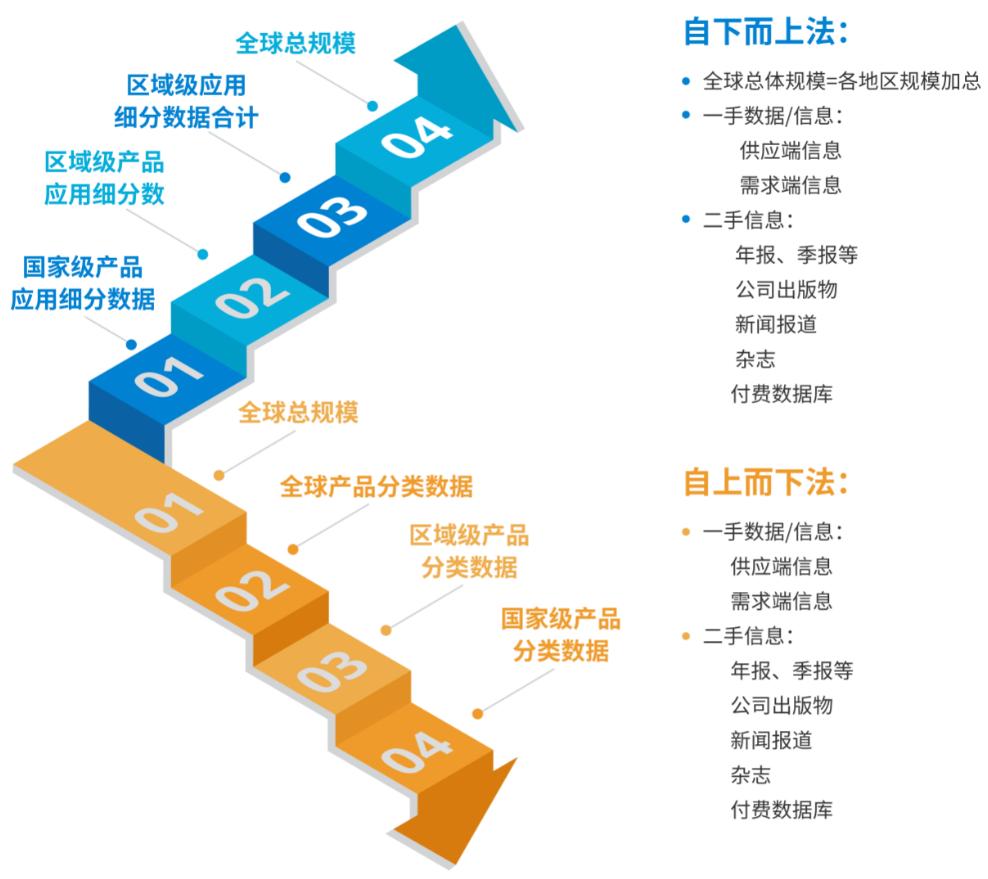


一、初步数据挖掘
研究工作从广泛的数据收集和预处理开始。我们聚焦于高可信度数据源,确保研究基础的稳固性与可追溯性,主要包括:
为构建完整的产业链画像,我们深入调研上下游关键节点。技术发展趋势通过行业调查、学术研讨会、核心期刊与专利布局分析获得,重点关注技术空白(White Space)与专利自由度(Freedom to Operate)。此外,我们还采集有关市场驱动力、制约因素、价格机制、供需关系等原始数据,并通过交叉比对验证其一致性与准确性,为后续建模提供坚实的数据基础。
研究范围:
历史数据 | 行业现状 | 市场规模 |
主要厂商 | 产品产销量、销售收入等 | |
竞争格局 | 市场份额及增长趋势 | |
扩产、并购等 | 历史及当前现状分析 | |
市场数据细分 | 产量、消费量、进出口等 | |
按分类细分 | 市场份额 | |
按应用细分 | 增长率 | |
按地区/区域细分 | 现状分析 | |
影响因素 | 市场环境 | 市场驱动因素 |
政府政策 | 下游需求 | |
技术革新 | 生产/销售成本 | |
市场风险 | 机遇与挑战 | |
预测数据 | 总体规模预测 | 产能、产销量、价格预测等 |
不同分类预测 | 市场份额及增长率 | |
不同应用预测 | 竞争趋势预测 | |
主要区域/国家预测 |
二、统计建模与市场预测
我们通过定制化模拟模型来完成市场估算与未来趋势预测。模型设计充分考虑研究对象的行业特性,并集成以下核心变量:
我们综合使用相关性分析、回归建模与时间序列预测等统计手段,精确评估各要素对未来市场规模的影响程度。
预测方法区分短期与长期,分别采用:
我们的分析坚持自下而上的市场估算方法,先对关键区域市场进行逐一研究,再逐步整合成全球视角。这种方式既保障了宏观逻辑的闭环,也能兼顾区域市场的差异性。
常用预测维度包括:
最终,我们通过加权平均法整合各参数的定量影响,得出行业未来的年均复合增长率(CAGR)与关键拐点预测。
三、初步验证与专家访谈
在报告定稿前,我们将所有模型输出与关键假设交由行业一线从业者进行验证。通过系统性的一对一访谈,确保研究结论具备市场代表性与实操指导意义。
受访对象涵盖:
访谈覆盖多地区、多语言场景,必要时由本地研究团队或专业译员协助进行。除了对数据和模型进行校验,访谈还能获取宝贵的市场一手信息、最新动态及行业预判,显著提升报告的时效性与战略价值。
主要研究目标包括:
陆吾咨询始终坚持以严谨方法驱动市场洞察。我们深信:方法的科学性决定了洞察的深度,洞察的深度决定了决策的价值。
Hong Kong : +852 444 39386
Beijing : +86 168 1026 1886
USA : 1-332-251-9418
Email : market@lookwhole.com